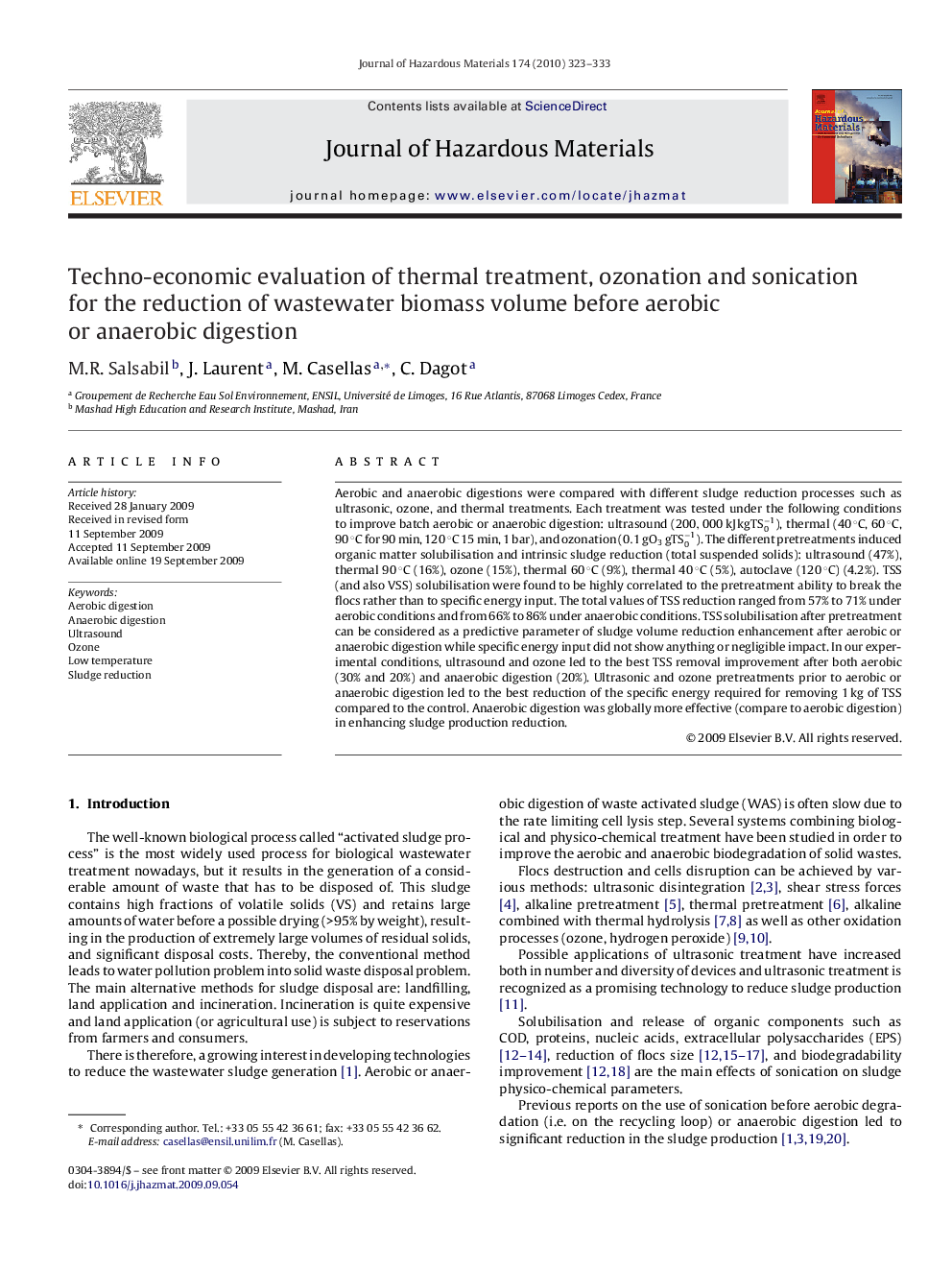| Article ID | Journal | Published Year | Pages | File Type |
|---|---|---|---|---|
| 580673 | Journal of Hazardous Materials | 2010 | 11 Pages |
Abstract
Aerobic and anaerobic digestions were compared with different sludge reduction processes such as ultrasonic, ozone, and thermal treatments. Each treatment was tested under the following conditions to improve batch aerobic or anaerobic digestion: ultrasound (200,000kJkgTS0â1), thermal (40 °C, 60 °C, 90 °C for 90 min, 120 °C 15 min, 1 bar), and ozonation (0.1gO3gTS0â1). The different pretreatments induced organic matter solubilisation and intrinsic sludge reduction (total suspended solids): ultrasound (47%), thermal 90 °C (16%), ozone (15%), thermal 60 °C (9%), thermal 40 °C (5%), autoclave (120 °C) (4.2%). TSS (and also VSS) solubilisation were found to be highly correlated to the pretreatment ability to break the flocs rather than to specific energy input. The total values of TSS reduction ranged from 57% to 71% under aerobic conditions and from 66% to 86% under anaerobic conditions. TSS solubilisation after pretreatment can be considered as a predictive parameter of sludge volume reduction enhancement after aerobic or anaerobic digestion while specific energy input did not show anything or negligible impact. In our experimental conditions, ultrasound and ozone led to the best TSS removal improvement after both aerobic (30% and 20%) and anaerobic digestion (20%). Ultrasonic and ozone pretreatments prior to aerobic or anaerobic digestion led to the best reduction of the specific energy required for removing 1 kg of TSS compared to the control. Anaerobic digestion was globally more effective (compare to aerobic digestion) in enhancing sludge production reduction.
Related Topics
Physical Sciences and Engineering
Chemical Engineering
Chemical Health and Safety
Authors
M.R. Salsabil, J. Laurent, M. Casellas, C. Dagot,
